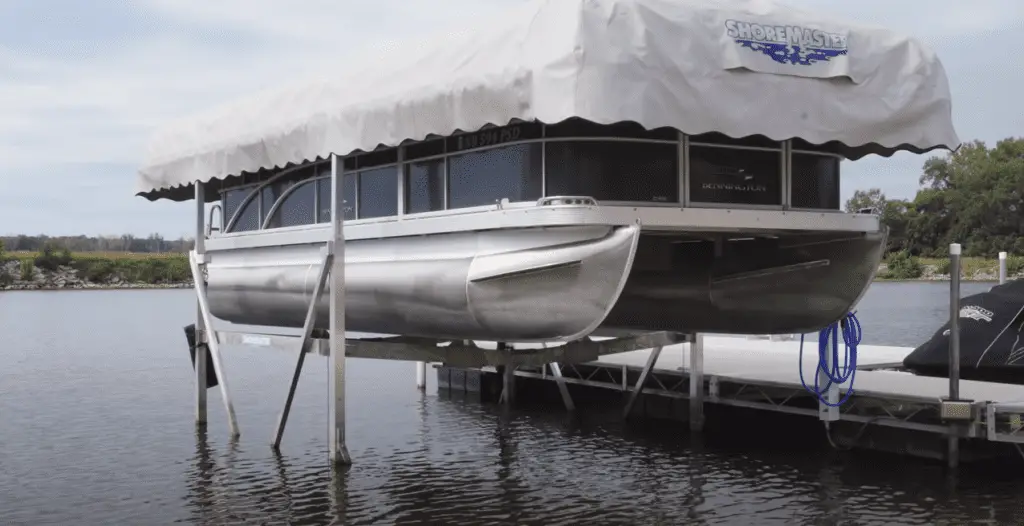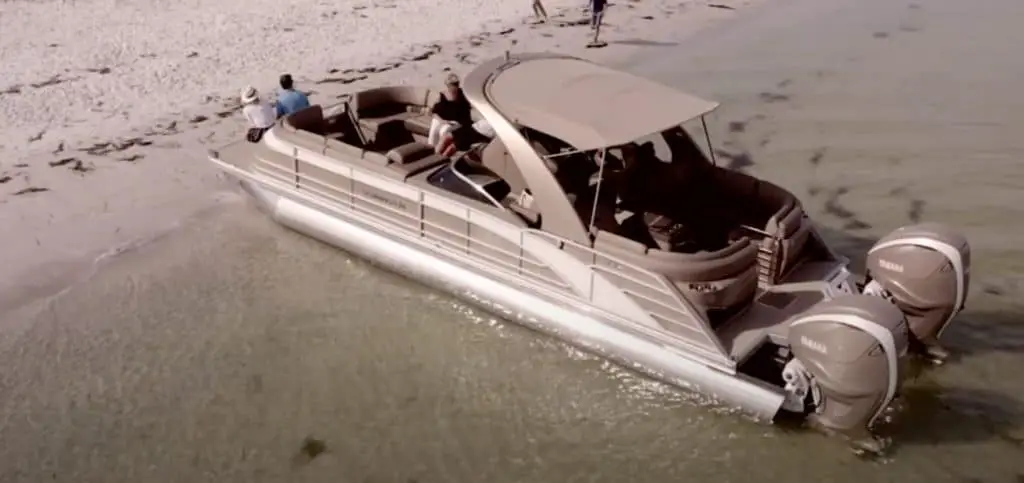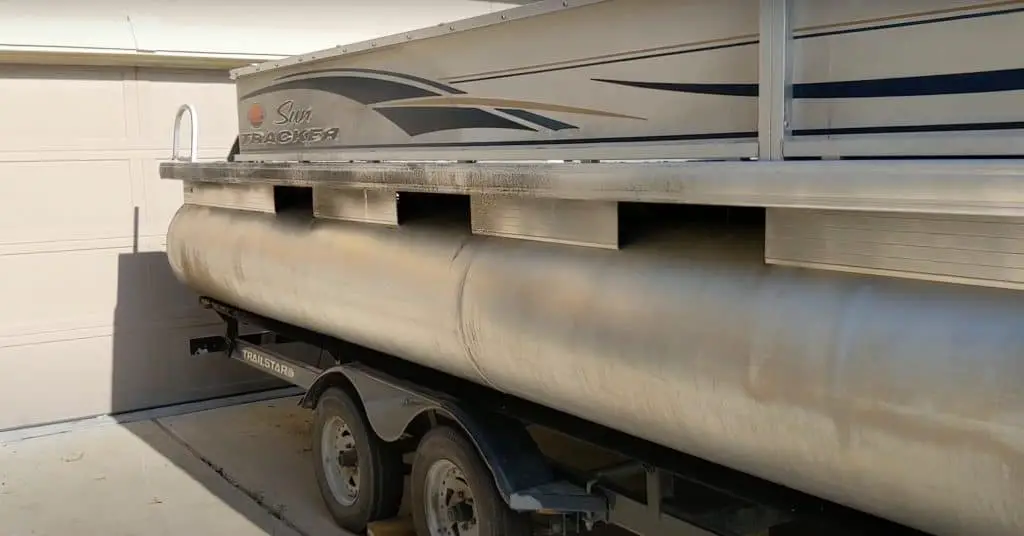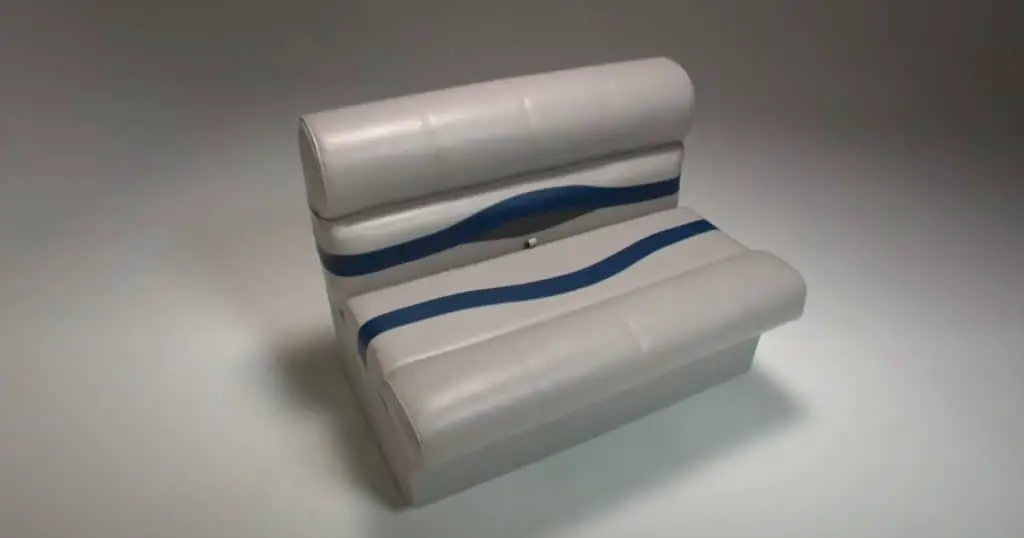If you thought buying a pontoon boat was expensive, you should see how much it costs to maintain one. Aside from the upfront cost of the boat itself, you’ll find that you’re going to have to shell out cash for a variety of other additional items and equipment to enjoy a seamless pontoon boating experience.
One of the big ticket items you’ll need to spend on will be the pontoon boat lift. But if you already have a boat lift, you can actually convert it to fit your pontoon so you won’t have to spend so much. Here’s everything you need to know about pontoon boat lift conversion.
What is Pontoon Boat Lift Conversion?
As the name suggests, pontoon boat lift conversion involves making a few adjustments so that an existing boat lift becomes pontoon compatible. A boat lift’s design usually accommodates a V-hull vessel. But because a pontoon has two hulls in the form of tubes, it might not fit into a boat lift that’s intended for a standard single V shaped hull.
These days, you can buy a conversion kit to turn a boat lift into a pontoon boat lift, but they can also cost quite a pretty penny. Fortunately, there are DIY methods you can try to cut back on costs. Of course, it will require some level of skill. But with the right tools and instructions, you should be able to accomplish the task just fine.
Why Should You Convert Your Boat Lift?
Why would you choose to convert a boat lift versus buying one specifically for your pontoon? Well, there are a few reasons. The first and obvious one would be cost. A boat lift can cost $12,000 or more, which makes it about a fifth of the price of your boat. Needless to say, they can be pretty expensive. So if you already have a boat lift, converting it instead could save you that extra expense.
And then there’s protection. There’s no question that keeping your pontoon boat out of the water can be beneficial in that it keeps your boat protected from extended moisture exposure. This keeps corrosion and marine pests at bay, especially if you’re storing for a long period of time. Versus the trailer, the boat lift also provides much greater convenience.
Finally, there’s space. Sure, you could always just buy a second boat lift for your pontoon. But is there space enough to accommodate it? Boat lifts have quite a large footprint, and if you already have one installed, setting up a second could eat up most of the area around your dock. Simply converting the existing lift cuts out the space considerations.
How to Convert a Boat Lift
Converting a boat lift to fit your pontoon won’t really take too much time or money, especially if you’re ditching the boat lift kit. One guy in particular was able to get the job done by simply attaching six garden timbers across the lift to cover up the V-hull frame.
The timbers then create a level surface for the tubes to sit on, letting you quite literally drive your pontoon boat over the timbers and then lift your pontoon boat out of the water. Securing the spans of wood entailed nothing more than heavy duty strapping. This also works well if you don’t want to make any permanent changes that you won’t be able to undo if you want to use your boat lift for a V hull again.
If you’re using southern yellow pine for the timber, then you might not have to install any material to cover the wood to protect your tubes from scratches. Nonetheless, some experts recommend layering on a sheet of carpet to prevent from scuffing the pontoons.
What About Rail or Conversion Kits?
It’s important to keep in mind that with a V shaped hull, a lot of the weight will be at the stern. So boat lifts are designed to provide extra carrying power towards the rear of the boat. You’ll need to take that into consideration if you’re thinking about loading your pontoon boat over a lift designed for V hull boats.
Now, if you’re not confident that you can execute the proper physics with six pieces of wood, then you might want to consider something a little more precise. Some boat owners do away with the guess work and buy rail kits that work as a lifting and centering device.
The purpose of the rail kit is to make sure that your boat’s weight is properly distributed over the lift so you won’t have to worry about damaging either your boat or your lift. To install, you simply need to remove the bunks or cradles on the existing boat lift and then install the conversion bunk according to the included instructions.
But because installation can be tedious, some boat owners buy the conversion kit and then hire someone to do the job for them. Just the labor fees alone could cost you between $300 to $500 extra, but at least you can be sure you’ve got a properly installed lift that won’t cave in on you during use.
Keep in mind though that rail kits can be pretty expensive. Those from Shoremaster can cost upwards of $1,500 a set. And while that might be a far cry from buying a brand new pontoon boat lift all together, there’s no denying that it’s still quite a big price to pay.
How to Park Your Pontoon on a Boat Lift
It’s one thing to install and convert a boat lift, and another thing to actually park your pontoon boat in it. If you’re not quite sure how to load your pontoon boat onto the lift from the water, here’s a handy guide:
Lower the Cradle
Obviously, the first step involves lowering the cradle so that it’s submerged in the water. You want to make sure that your tubes can clear the surface of the boat lift without scraping against the cradle underneath. When the boat is positioned, then you can get started on lifting the cradle and thus the boat out of the water.
Line Up Your Boat
With the cradle lowered into the water, line your boat up with the lift. As much as possible, you should be facing the lift dead center so your pontoon boat fits perfectly over the bunks. Do not attempt to move into the lift from an angle. This could jeopardize the safety of both the lift and your boat. Once you’re lined up, shift to neutral.
Let Your Boat Drift
That last push right before you shifted from drive to neutral should keep your boat drifting into the boat lift. Keep in mind though that if you’re doing this in rough weather or strong winds, you might not be able to keep your boat straight if you’re in neutral.
Find Your Marker
It might be best to do this before you start the process. Some boaters will actually mentally mark out a feature on their boat that when it aligns with a part of the lift, they’ll know they’re in the right spot. For instance, some boat owners will wait until their gas cap is aligned with the left guide bunk to make sure they’re far enough into the boat lift before they cut the engine.
Shift Into Reverse
If you’ve drifted too far forward, momentarily shift into reverse to counteract the forward movement of your boat. You can then cut the engine once you’re in the perfect spot. Then you can start lifting the cradle to get your boat out of the water.
Distribute the Weight
As the boat lift raises your boat out of the waves, you’ll want to make sure that all of the weight on deck is evenly distributed. If you’ve got passengers on board, tell them to avoid staying together at one part of the boat. If a part of your boat weighs heavier than the rest, this could damage your tubes or cause alignment issues with your boat lift.
Parking a pontoon boat in a boat lift does take quite a bit of practice. But if you really think about it, it’s not too different from parking in a slip. Just make sure you know how far into the boat lift your boat needs to go so as not to place any unnecessary pressure on the tubes and the cradle as they lift out of the water.
A Cheaper Way to Store Your Boat
A boat lift can be immensely helpful at keeping your boat protected from damage, rough weather, and other potential insults on the waves. But they can be expensive. So if you’ve got an existing lift at home, you can accommodate your pontoon on it with a pontoon boat lift conversion.
There are tons of ways to adapt that lift to match your pontoon boat - whether DIY or done by a professional. Whichever you choose, you can be sure to keep your boat sufficiently protected from the elements and more without having to spend as much as you would on a brand new lift.






